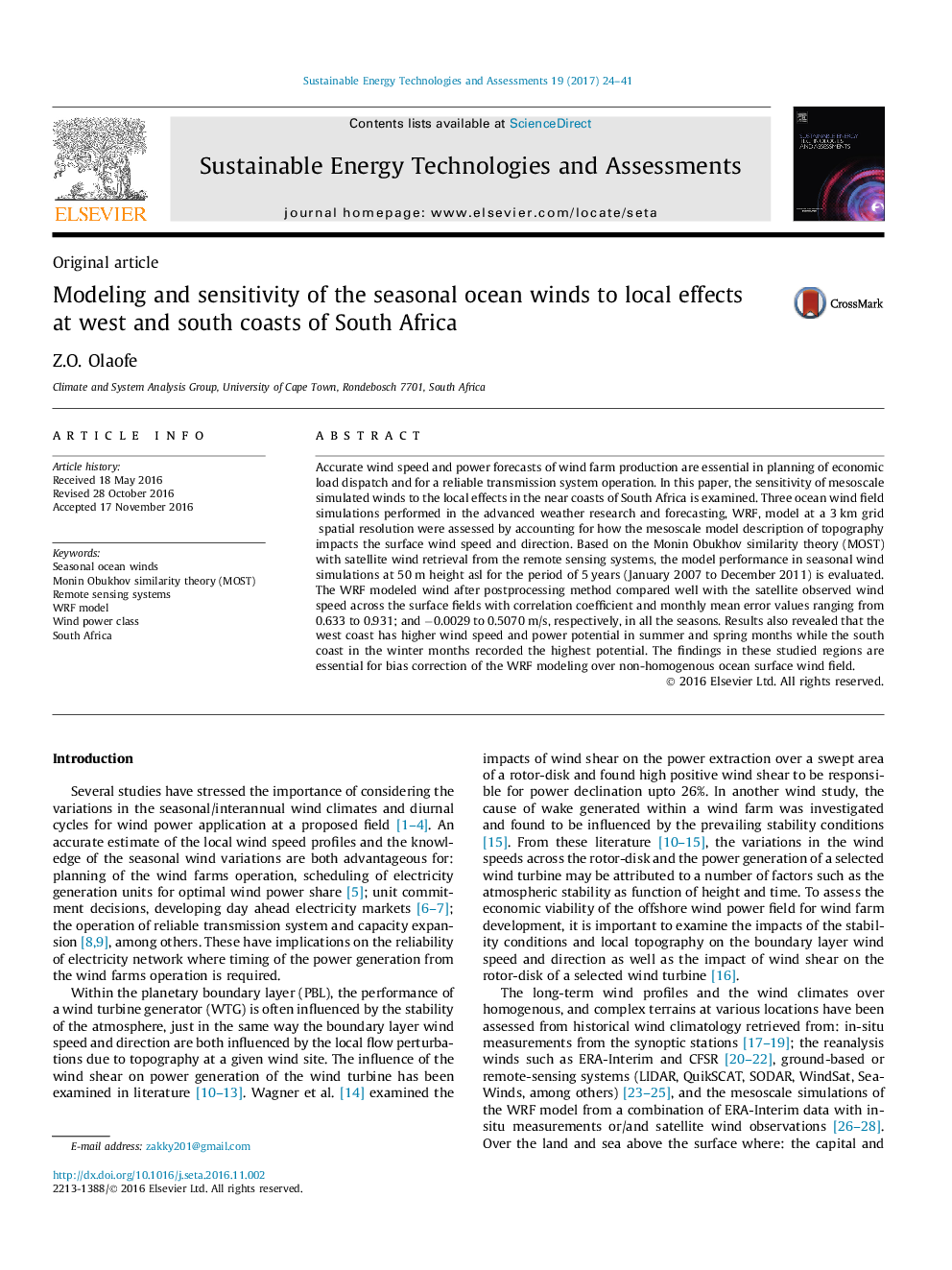| Article ID | Journal | Published Year | Pages | File Type |
|---|---|---|---|---|
| 5483503 | Sustainable Energy Technologies and Assessments | 2017 | 18 Pages |
Abstract
Accurate wind speed and power forecasts of wind farm production are essential in planning of economic load dispatch and for a reliable transmission system operation. In this paper, the sensitivity of mesoscale simulated winds to the local effects in the near coasts of South Africa is examined. Three ocean wind field simulations performed in the advanced weather research and forecasting, WRF, model at a 3Â km grid spatial resolution were assessed by accounting for how the mesoscale model description of topography impacts the surface wind speed and direction. Based on the Monin Obukhov similarity theory (MOST) with satellite wind retrieval from the remote sensing systems, the model performance in seasonal wind simulations at 50Â m height asl for the period of 5Â years (January 2007 to December 2011) is evaluated. The WRF modeled wind after postprocessing method compared well with the satellite observed wind speed across the surface fields with correlation coefficient and monthly mean error values ranging from 0.633 to 0.931; and â0.0029 to 0.5070Â m/s, respectively, in all the seasons. Results also revealed that the west coast has higher wind speed and power potential in summer and spring months while the south coast in the winter months recorded the highest potential. The findings in these studied regions are essential for bias correction of the WRF modeling over non-homogenous ocean surface wind field.
Keywords
Related Topics
Physical Sciences and Engineering
Energy
Energy Engineering and Power Technology
Authors
Z.O. Olaofe,
